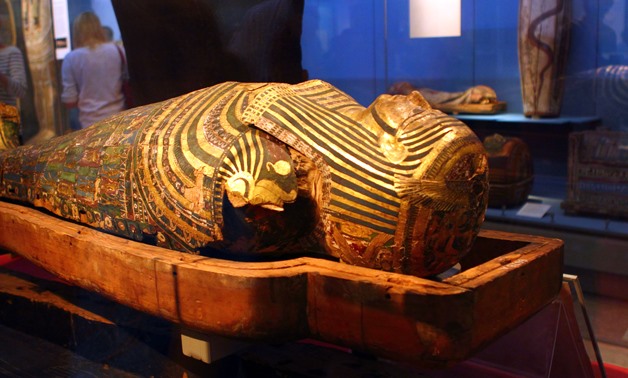
Sarcophagus of Egyptian Priest Hornedjitef- CC via Flickr/Justin Ennis
CAIRO - 29 August 2019: Egypt is preparing to open an archaeological museum in the New Administrative Capital in the upcoming months to tell the history of Egyptian capitals in different eras.
The museum will tell the history behind the Egyptian capitals from prehistoric eras to modern times to clarify why the New Administrative Capital of Egypt was created.
The Egyptian Ministry of Antiquities and Almasa Group signed a cooperation protocol to establish the new museum in the new capital's City of Arts and Culture. The cooperation protocol was signed on Aug. 27 at Almasa Hotel in downtown Cairo.
“This protocol was signed after the approval of the Board of Directors of the Supreme Council of Antiquities, according to the Law on the Protection of Antiquities and its amendments, with the aim of establishing an archaeological museum. The museum will feature a variety of artifacts that reflect the richness of Egypt's civilizational and cultural history,” said Secretary General of the Supreme Council of Antiquities Mostafa Waziri during the protocol signing ceremony.
The Supreme Council of Antiquities will administer and supervise the museum’s antiquities. It will also select the artifacts to be displayed, prepare the design of the showcases and provide full security of the artifacts.
Moreover, the City of Arts and Culture is responsible for the construction of the museum and the services it includes, including providing modern lighting, fire insurance, theft insurance and general cleanliness.
In press statements on the sidelines of the ceremony, Minister of Antiquities Khaled al-Anani stated, “The protocol provides the Ministry of Antiquities' collection of artifacts to the museum of the New Administrative Capital for a period of 10 years, which is renewable. The profits will be shared by the ministry and Almasa Group.”
“This is a new policy pursued by the Ministry of Antiquities in light of the lack of resources that hinder the establishment of new museums. The ministry enters into partnerships with other entities to build museums. The ministry is mainly responsible for displaying, securing and preserving the antiquities,” Anani continued.
Located on an area of 8500 square meters the New Administrative Capital museum consists of two floors. It includes a main exhibition hall and sub-galleries.
“The Museum of Antiquities in the City of Arts and Culture will feature a thousand artifacts that tell the history of Egypt through different historical eras. Its entrance is decorated with two Egyptian obelisks, which were brought from the eastern San Hajar area in Sharqiya. It will also house the newly discovered Toto cemetery, which was recently dismantled and relocated from Sohag to the Administrative Capital Museum,” Waziri revealed.
The New Administrative Capital's City of Arts and Culture includes an opera house built on an area of 86,000 square meters. The main hall of the new opera theater can accommodate up to 2,200 individuals. The city also has a central library standing on 9,000 square meters.
Numerous buildings for music, cinema, painting and sculpture will be prepared in the city, in addition to a wide range of restaurants and various services for visitors.
“The establishment of the City of Arts and Culture in the New Administrative Capital came at the request of President Abdel Fatah al-Sisi, where the establishment of the city started more than a year ago. Fifteen thousand workers participated in the construction operations. The timetable for the establishment of the city was 7 years, and it was pressed to 2 years as directed by the president,” said Walid Samy, the general manager of Almasa Group.

Comments
Leave a Comment